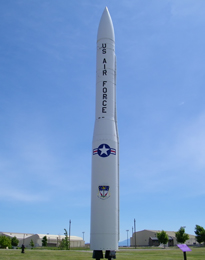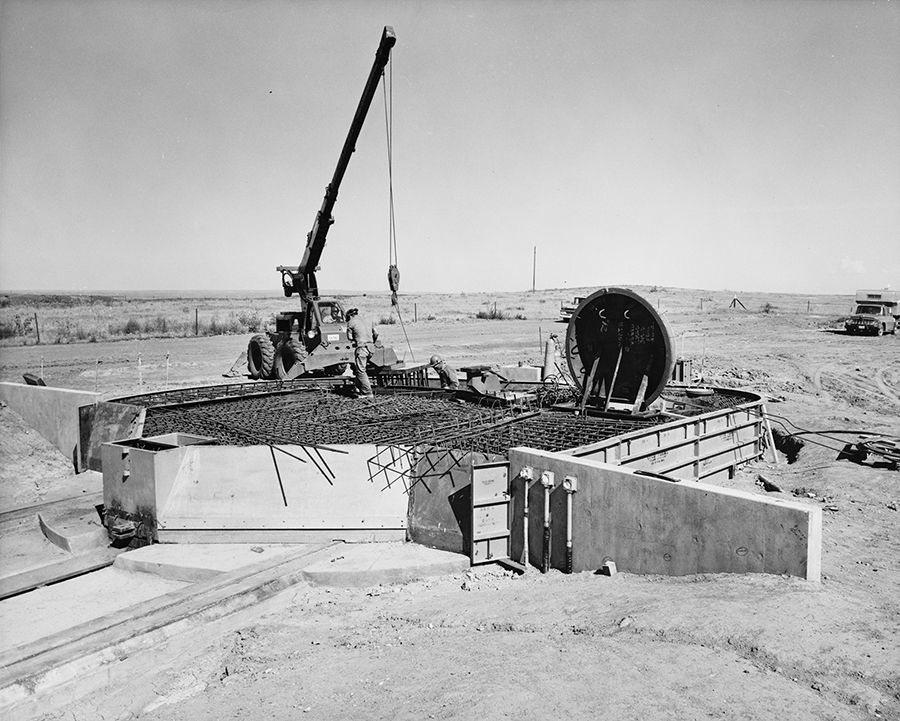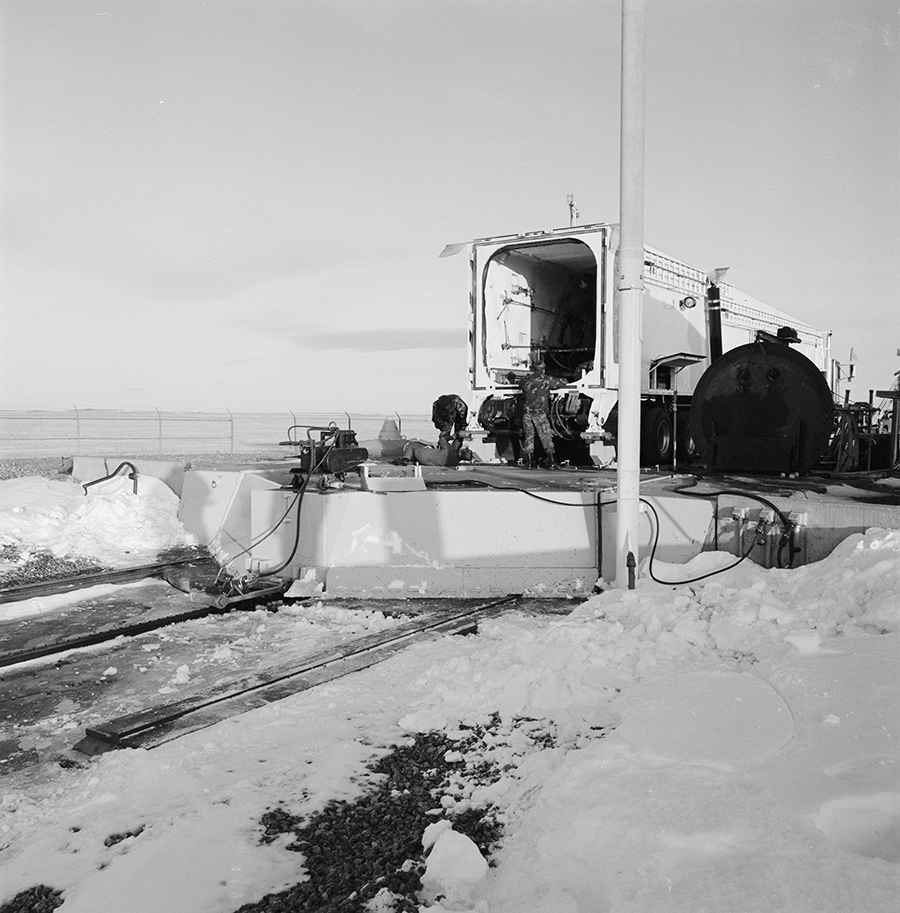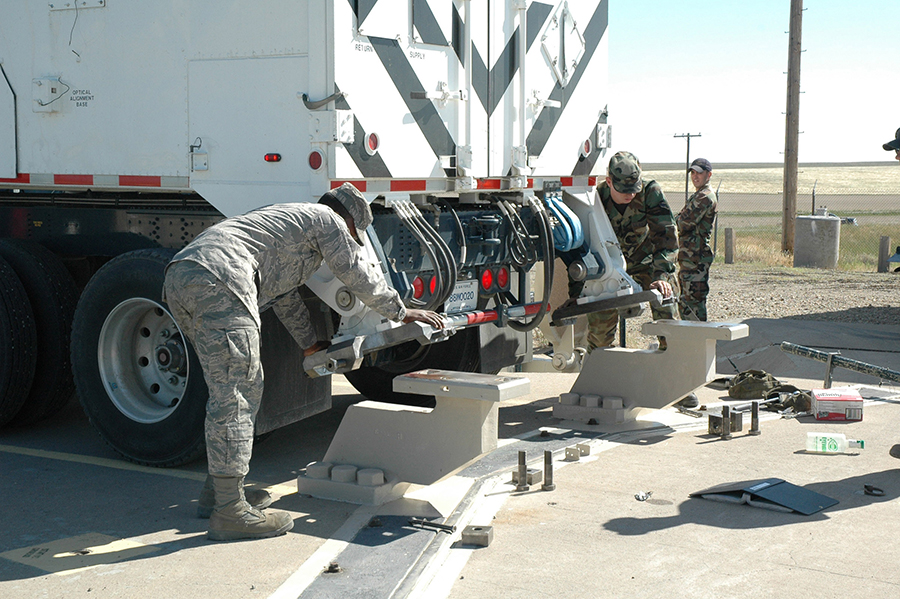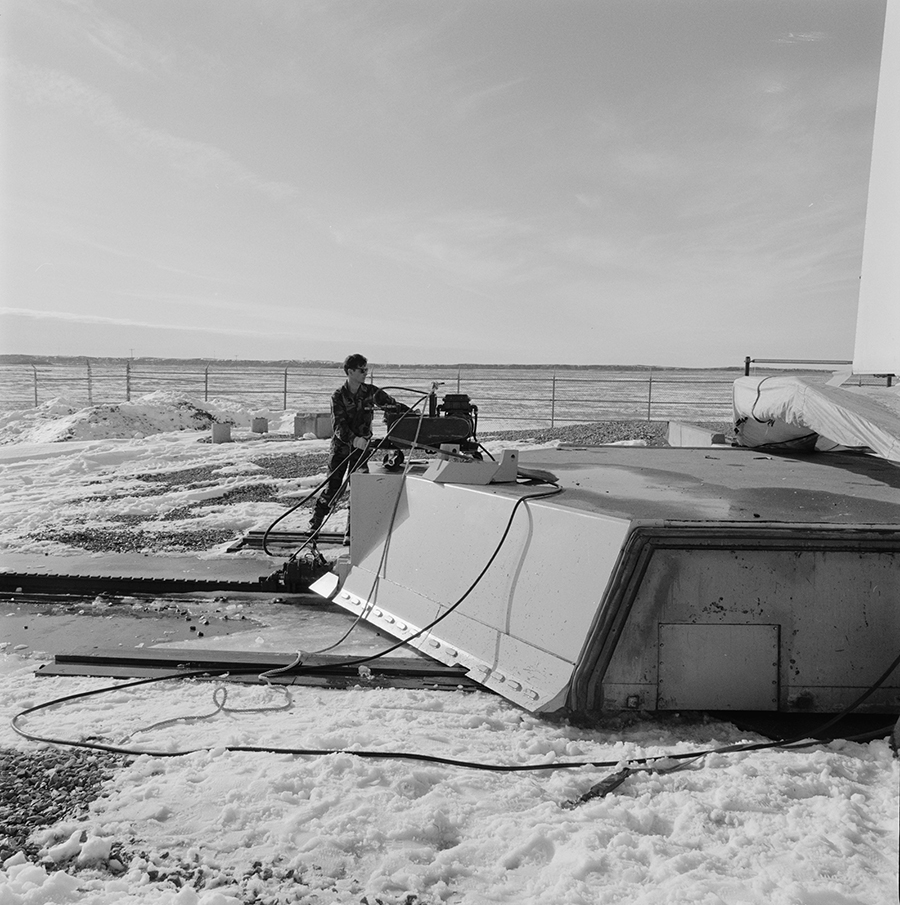Launcher Closure Door
The Launcher Closure Door is the massive structure that sits directly above the Minuteman missile which has been emplaced into the launch tube. Its design consists of 110 tons of a hexagon shaped cap of reinforced concrete and steel that is 3 and 1/2 feet thick.
Its design is such that in the event of a nuclear blast, the Launcher Closure Door functions as a shield, if you will, that protects the Minuteman missile that sits down inside the launch tube, from a blast in the event of an enemy attack.
An additional precaution that has been incorporated into the design of the closure door, is protecting the missile inside the Launch Facility from a) a nuclear explosion and b) any debris that might fall onto the Launch Facility and Launcher Closure Door.
Throughout the years since first deploying the first generation of the Minuteman missile, the Minuteman I missile, the Air Force added a "debris collector" to the Launcher Closure Door, which helps catch any debris (rocks and dirt) from falling into the launch tube as the Launcher Closure Door was being opened in preparation for launch. This collector allows the rock and dirt to fall down into the device itself, which in turn helps protect the missile from being hit from any possible debris as the Launcher Closure Door opens.
A large diameter steel pin located in the front of the Launcher Closure Door (furthest away from the launch tube,) anchors the door closed. In the event of a launch, the large pin is retracted, allowing the door to slide open.
In the photo above, you can see the maintenance crew bolting the Transporter Erector Loader to pylons that provide the Transporter Erector Loader, TEL, a solid anchor to raise the TEL, which allows the crew to either lower a missile or one or more of the 3 stages of solid fuel boosters, down into the missile silo. The TEL is also used to pull one or more of the solid rocket boosters out of the Launch Tube.
At the front of the Launcher Closure Door you can see the machine the maintenance crew uses to open the door, allowing the crew access to the missile and its components. The cogged steel track that is anchored in the center of the concrete apron/floor that extends away from the launch tube, is what this machine uses to pull the door open.
To provide the reader with just how serious the Air Force is in providing and maintaining security to the most powerful weapon in the world, it is standard procedure that any time a maintenance crew "rolls the door" a massive contingent of men and women security crew members are at the Launch Facility itself, including an airborne helicopter nearby, and additional Air Force security forces close by, should the need arise that more security is needed.
The photo above provides a close up view of a maintenance crew positioning the arms of the Transporter Erector Loader to bolt securely to the two pylons, that sit just at the edge of the Launcher Closure Door.
This photograph gives a different perspective of how the Launcher Closure Door is opened with the mechanical device that uses the cogged track that is attached in the center of the concrete, situated just in front of the closed Launcher Closure Door.
The mechanism that is used to open the Launcher Closure Door is a ballistic gas generator that provides the means to quickly push the door open, once the need for launch has been established. As its names implies, highly compressed gas is used to force the door open.
Based on research and experience, the Air Force factored in the possibility of having a significant amount of snow and ice accumulated on top of the Launcher Closure Door, or if there is a significant amount of debris from a nuclear blast that has been scattered onto, across and in front of the door, the amount of force used to open the door was increased to assure that the door could be opened even with any added material that could be creating an obstruction.
